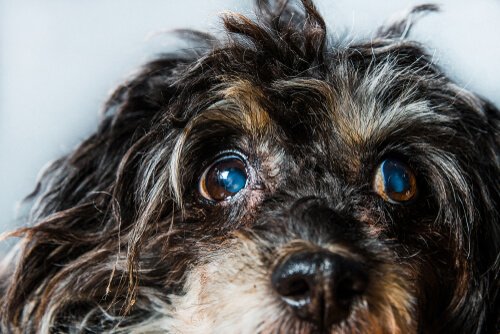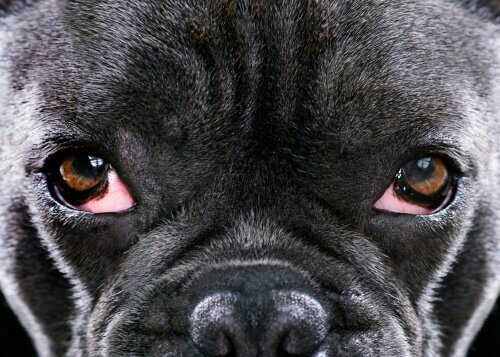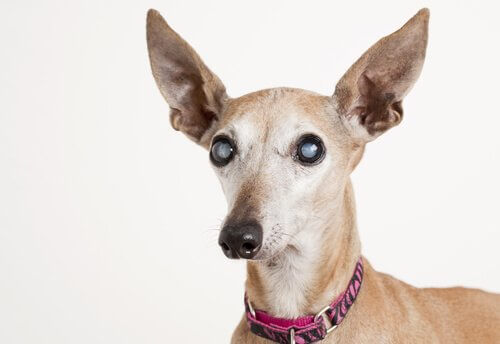Glaucoma in Dogs: Symptoms and Treatments

Glaucoma in dogs causes irreversible vision damage that could even lead to blindness. Because of this, it’s important to have regular check-ups with your vet. Here’s what we know about the subject.
What is glaucoma in dogs?
As a first measure, it’s very important to learn all we can about this condition. It causes progressive damage in the optic nerve and, with it, a decrease in the animal’s visual field. Glaucoma in dogs can affect either one eye or both, and when it’s too advanced, it will lead to blindness.
There are two types of glaucoma: the primary open angle, and the secondary. The first one is due to genetic or physical causes. It doesn’t allow proper circulation of the fluid responsible for moistening the ocular structures. The genetic or secondary glaucoma appears due to trauma or illness.
While all dogs can suffer from glaucoma, there are certain breeds more prone to it. These include the Maltese bichon, the Cocker Spaniel, the Pekingese, and the French bulldog.
The symptoms to watch for
Because the evolution of this condition is slow, there are no symptoms until it becomes quite advanced, and, for that reason, it’s hard to diagnose. However, as pet lovers, one must pay close attention to certain changes, albeit subtle, in our pets’ eyes.

In the initial phases, glaucoma is completely asymptomatic as the dog can’t show us in any way that their sight is progressively becoming blurry.
As the illness progresses, it can cause the following:
- Red eyes
- Nausea
- Vomiting
- Aggressive behavior
- Swelling of the eye area
- Excessive blinking
- An appearance of a cloudy layer in the front of the eye
- Dilated or non-responsive pupils
- Protruding eyeball
- Reddening of the blood vessels.
The enlargement of the eyeball (buphthalmos), the advanced degeneration within the eye, and the loss of complete vision (blindness) are the three final signs of glaucoma in dogs. At that stage, there’s no treatment available to reverse the situation.
How is glaucoma treated in dogs?
When the veterinarian carries out different tests to determine blood pressure in the eye, and identifies a higher tension than usual, then they can diagnose early glaucoma. In this case they will prescribe drugs such as mannitol to try to save the animal’s sight.

If there’s an accumulation of ocular fluid (which protects the optic nerve), then the vet will drain that. Also, cyclocryotherapy is a last resort technique that freezes the cells that are producing too much liquid.
If glaucoma is chronic, with no vision in the affected eye, then it will be more susceptible to infections or corneal lesions. In this case, the doctor will, most likely, decide to remove it. Some vets will insert a prosthesis, for aesthetic reasons, and others choose to sew up the cavity.
To avoid getting to a point where there’s no possibility of recovery, prevention is essential. If you have a dog breed that’s vulnerable to glaucoma, do annual vet check-ups. Furthermore, if you notice any symptoms, talk to a professional.
If your pet already has glaucoma in one eye, do everything you can so that it doesn’t advance to the other eye. For example, some say that’s better to put on a harness than a collar, in order to reduce intraocular pressure.
Finally, in order to try to prevent glaucoma in dogs, there’s also the possibility of applying eye drops to control the production of intraocular fluid. This is especially necessary if the animal has a very thin cornea or belongs to a breed with a high risk of glaucoma.
All cited sources were thoroughly reviewed by our team to ensure their quality, reliability, currency, and validity. The bibliography of this article was considered reliable and of academic or scientific accuracy.
Gutiérrez, C. (2009). PATOLOGÍAS OCULARES. Universidad Autónoma de Barcelona.